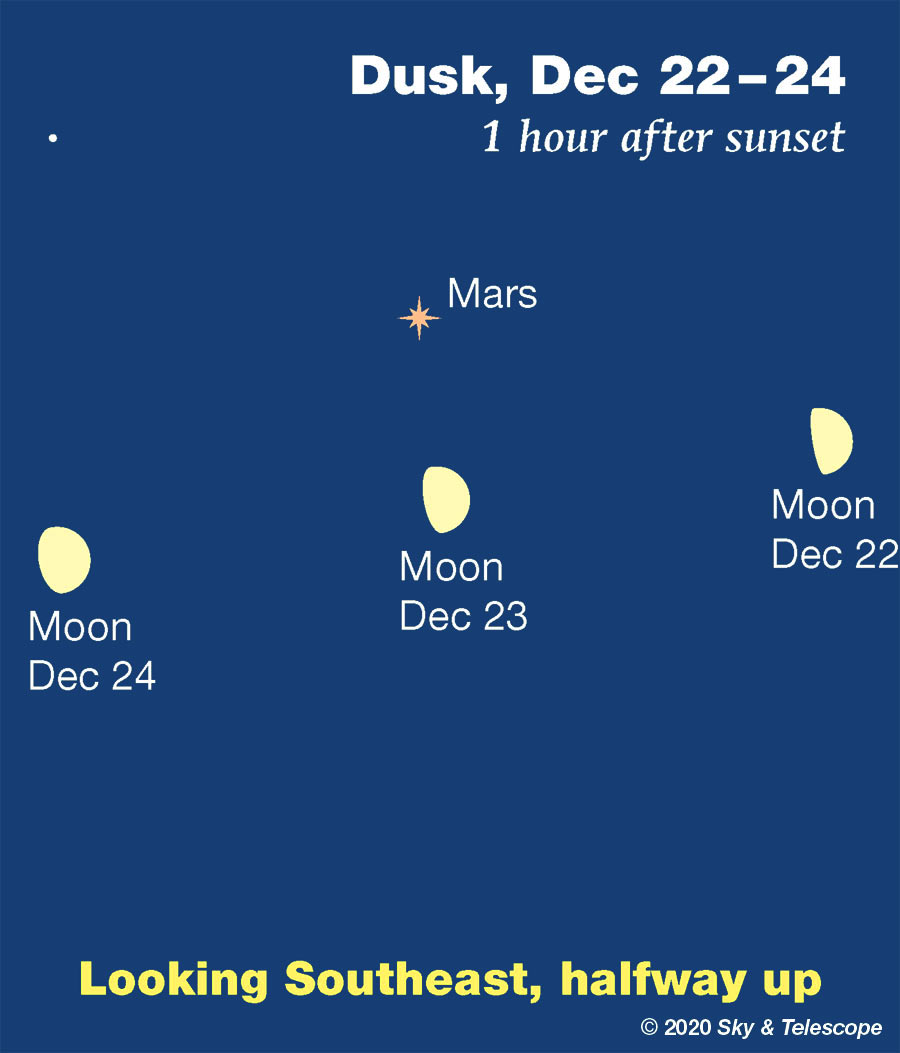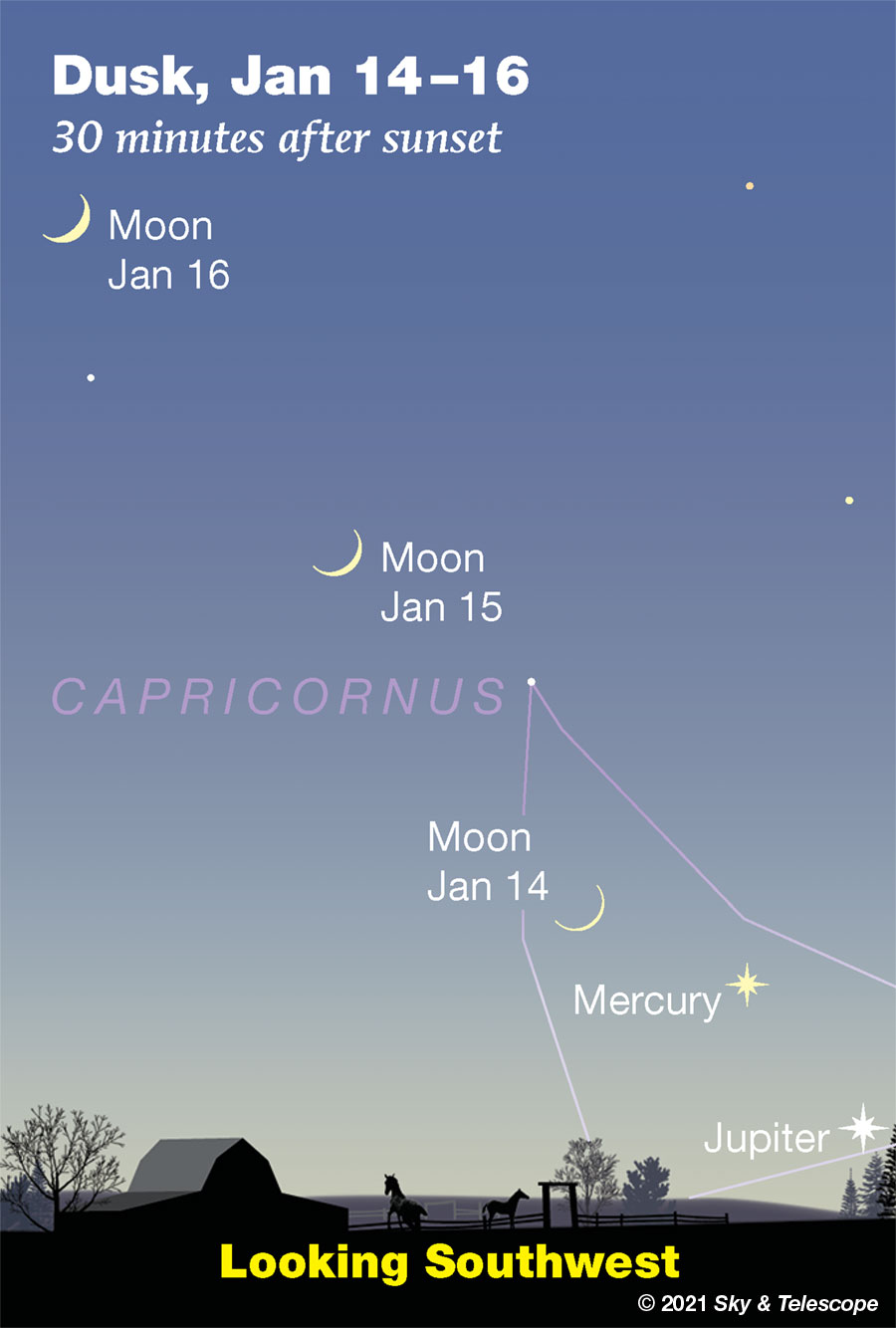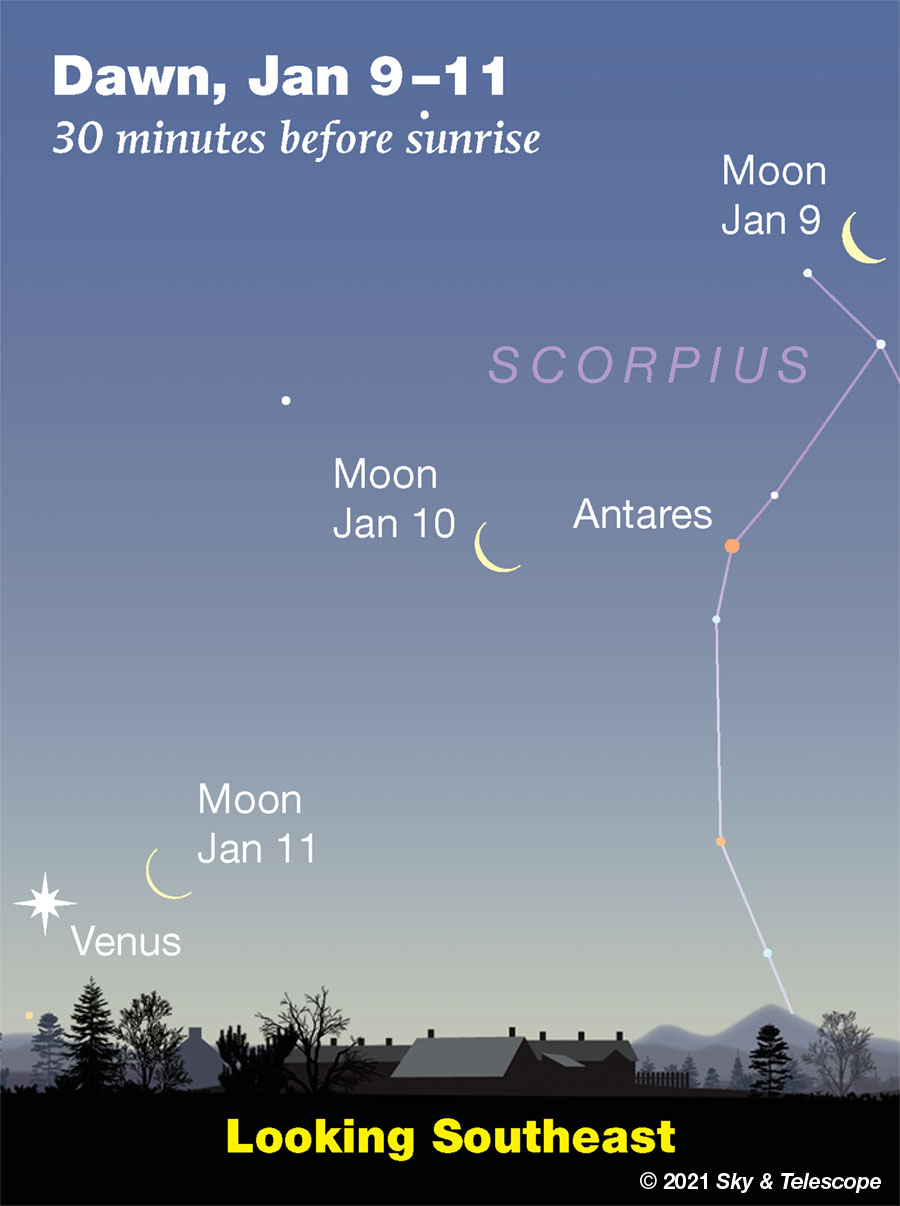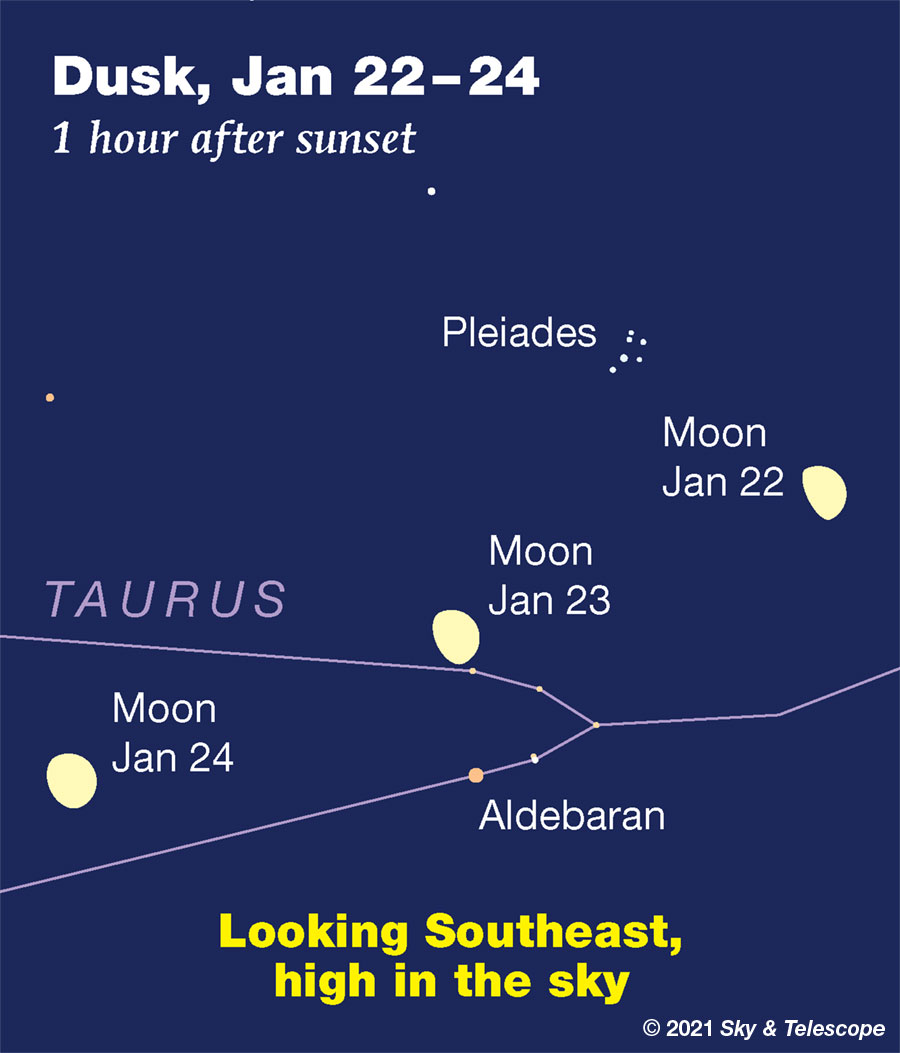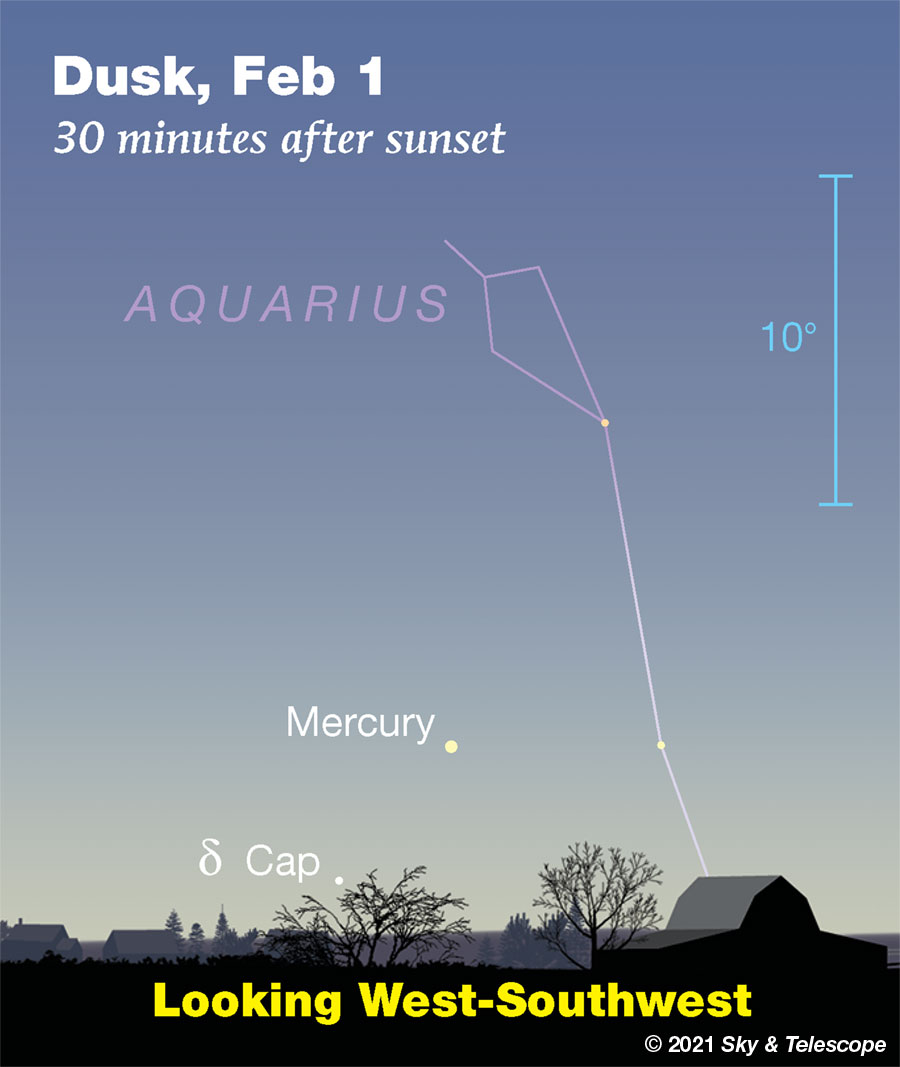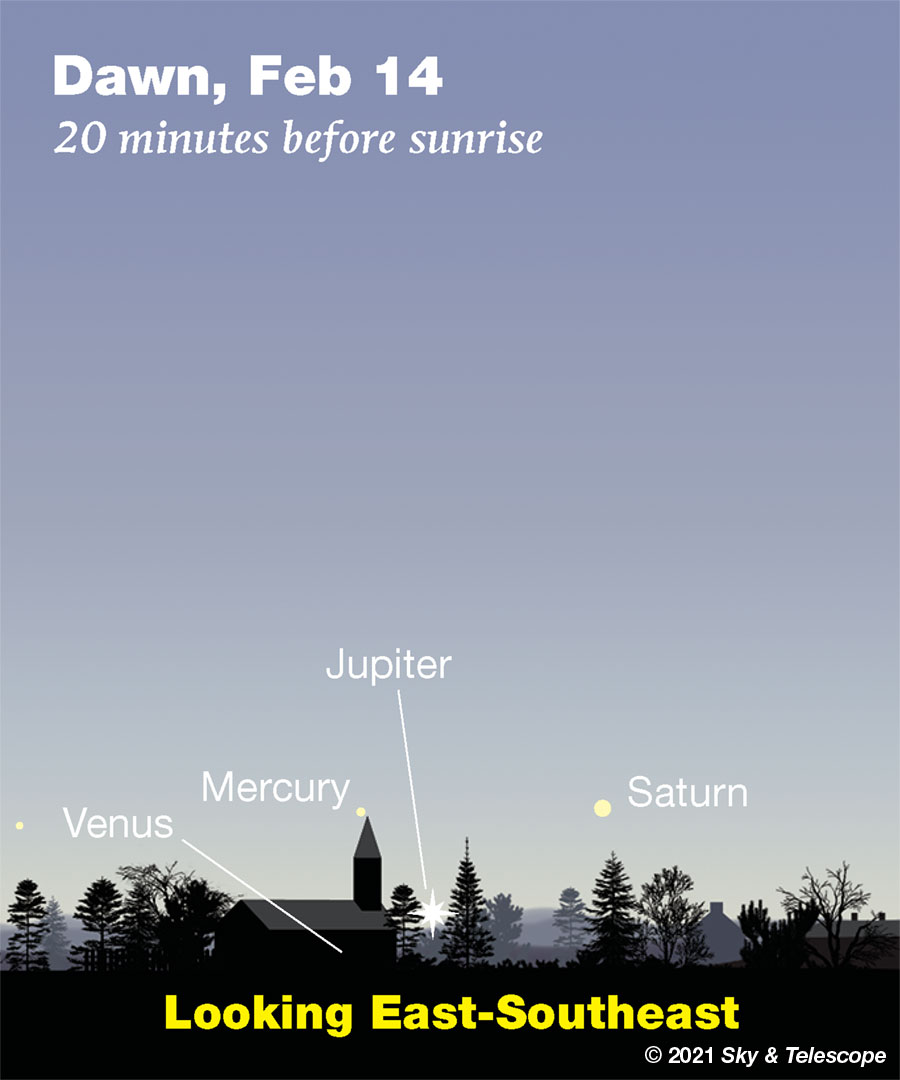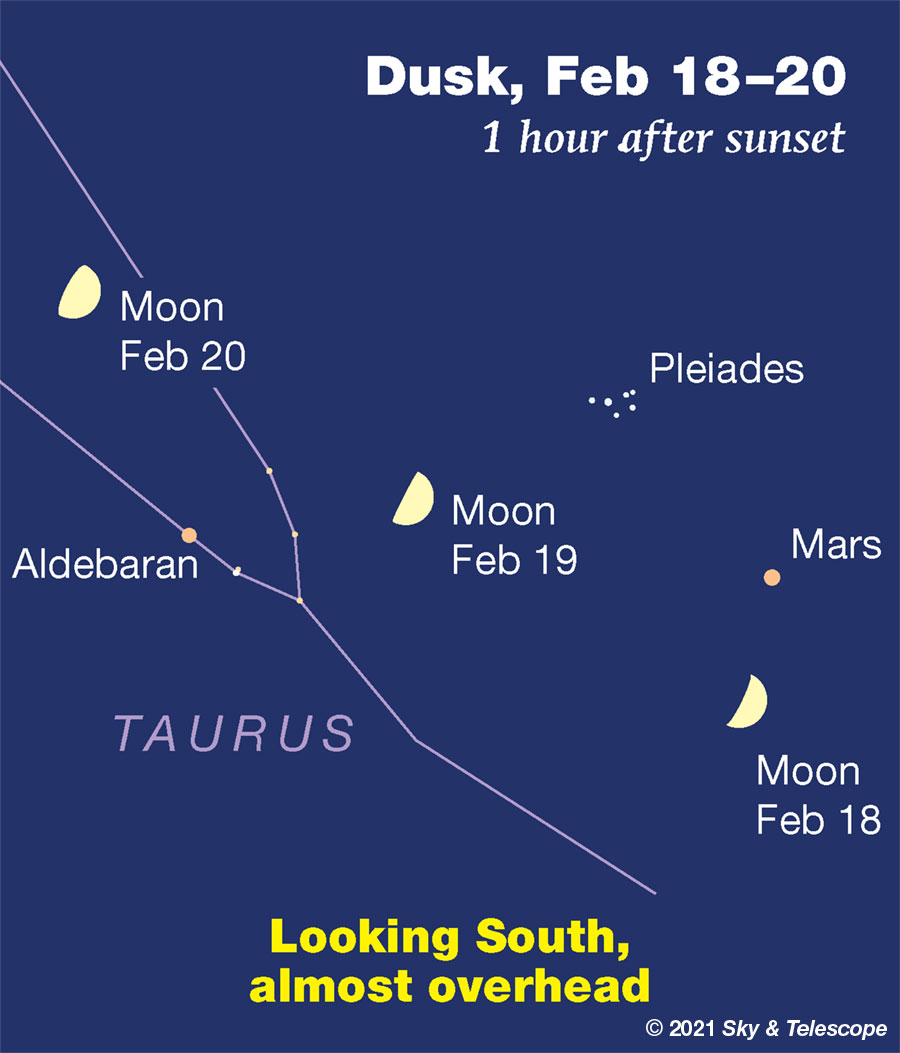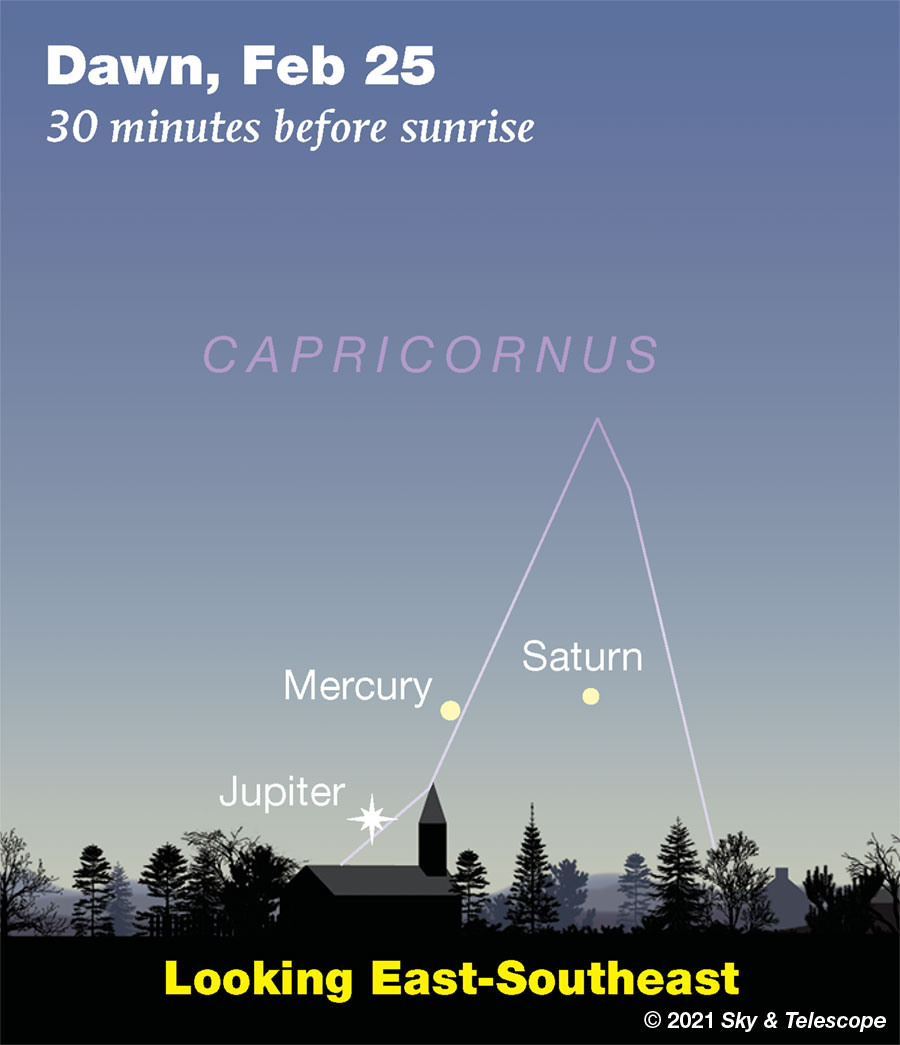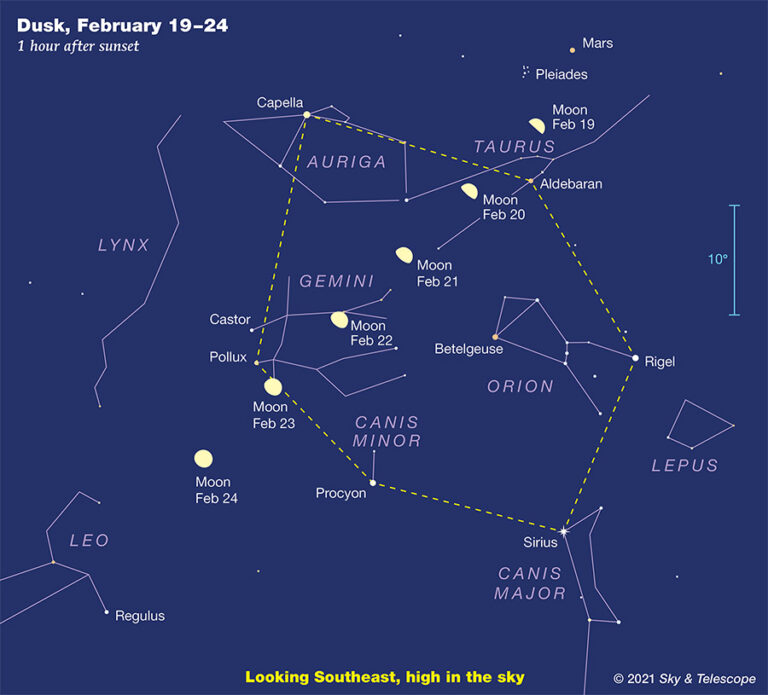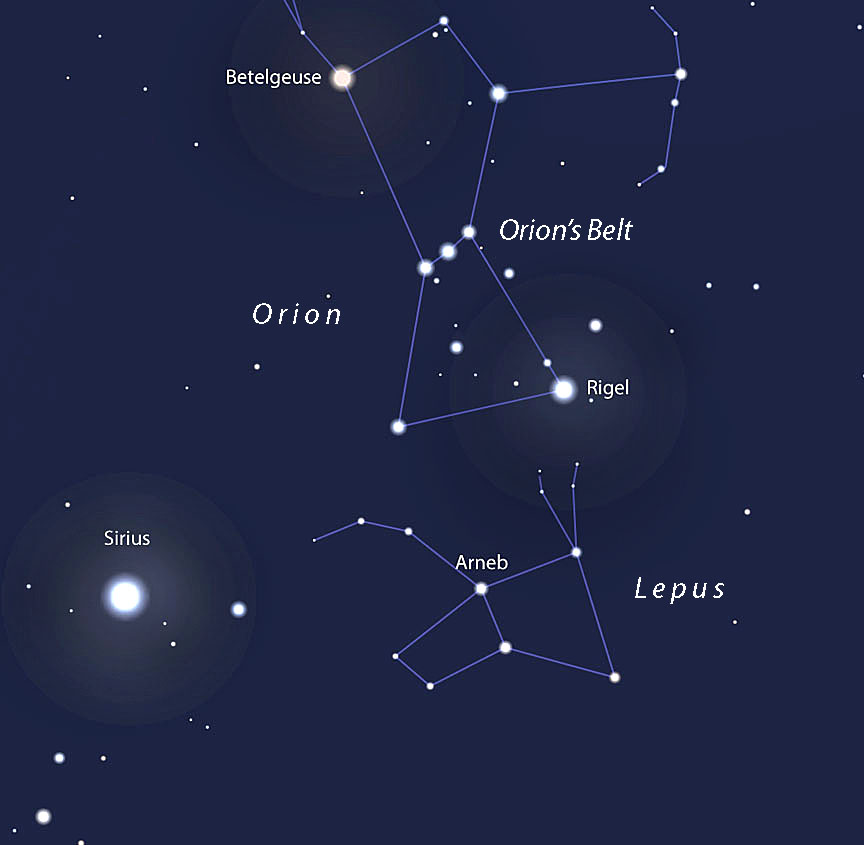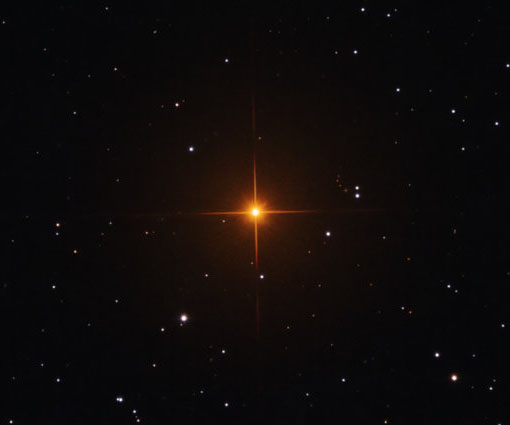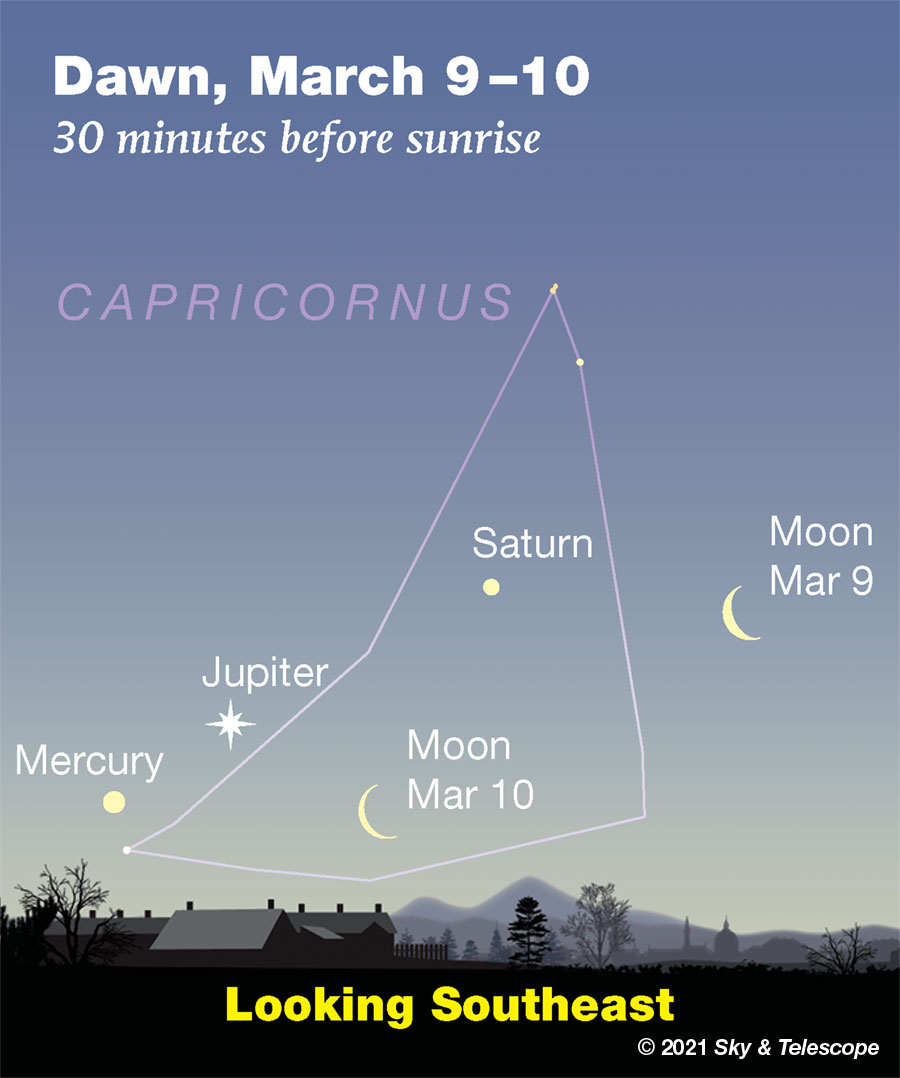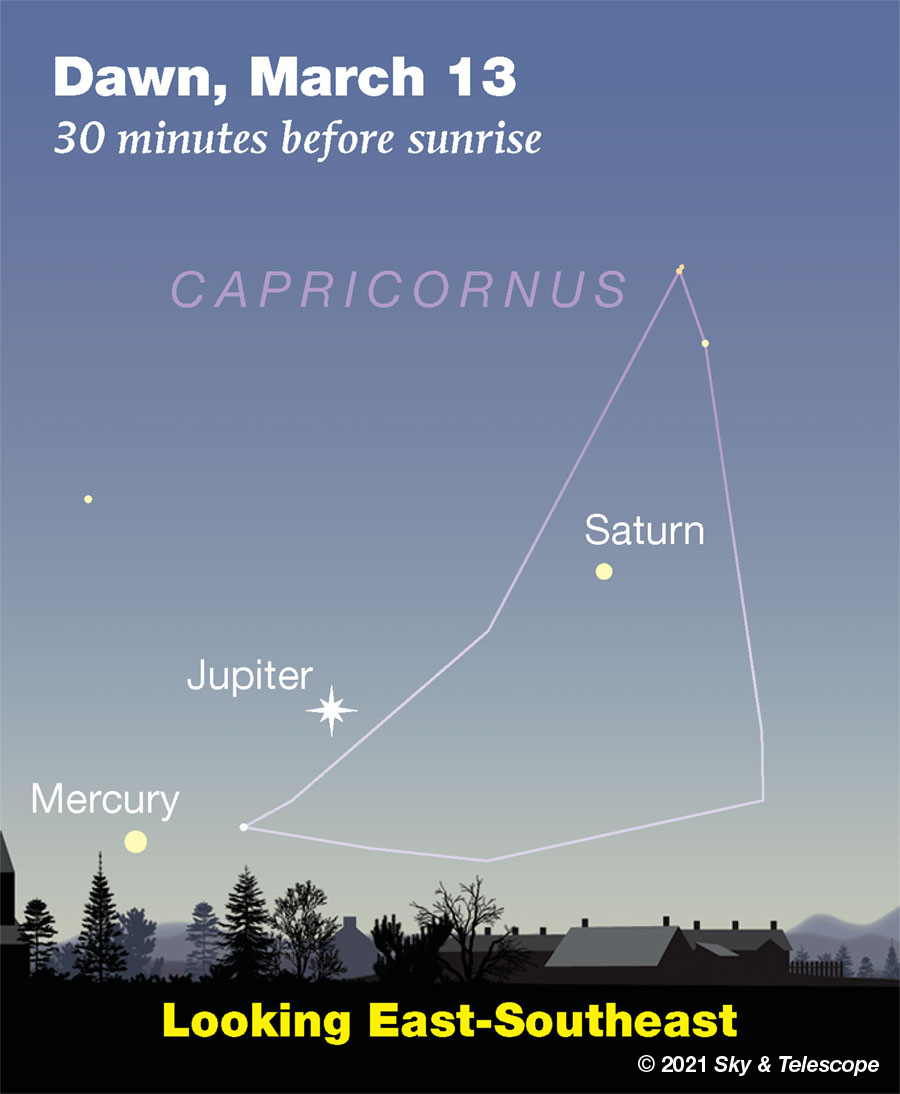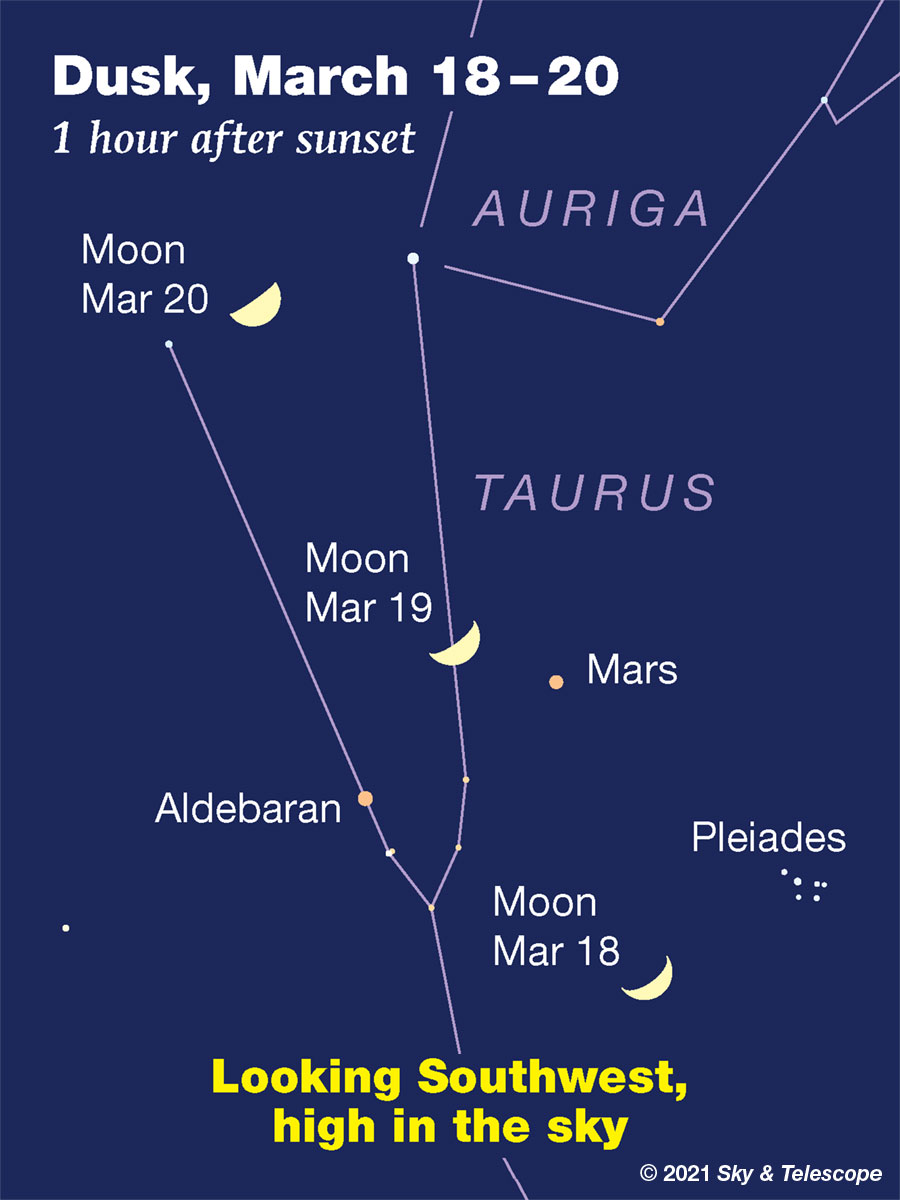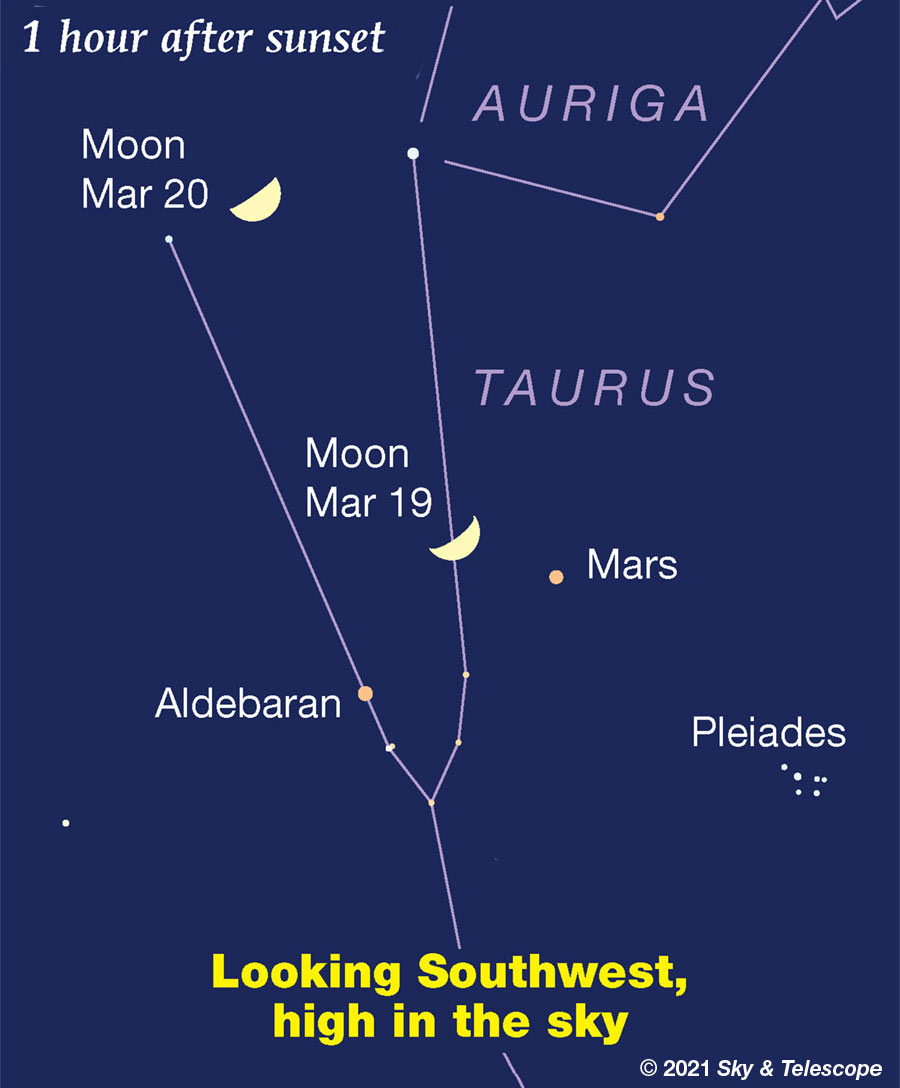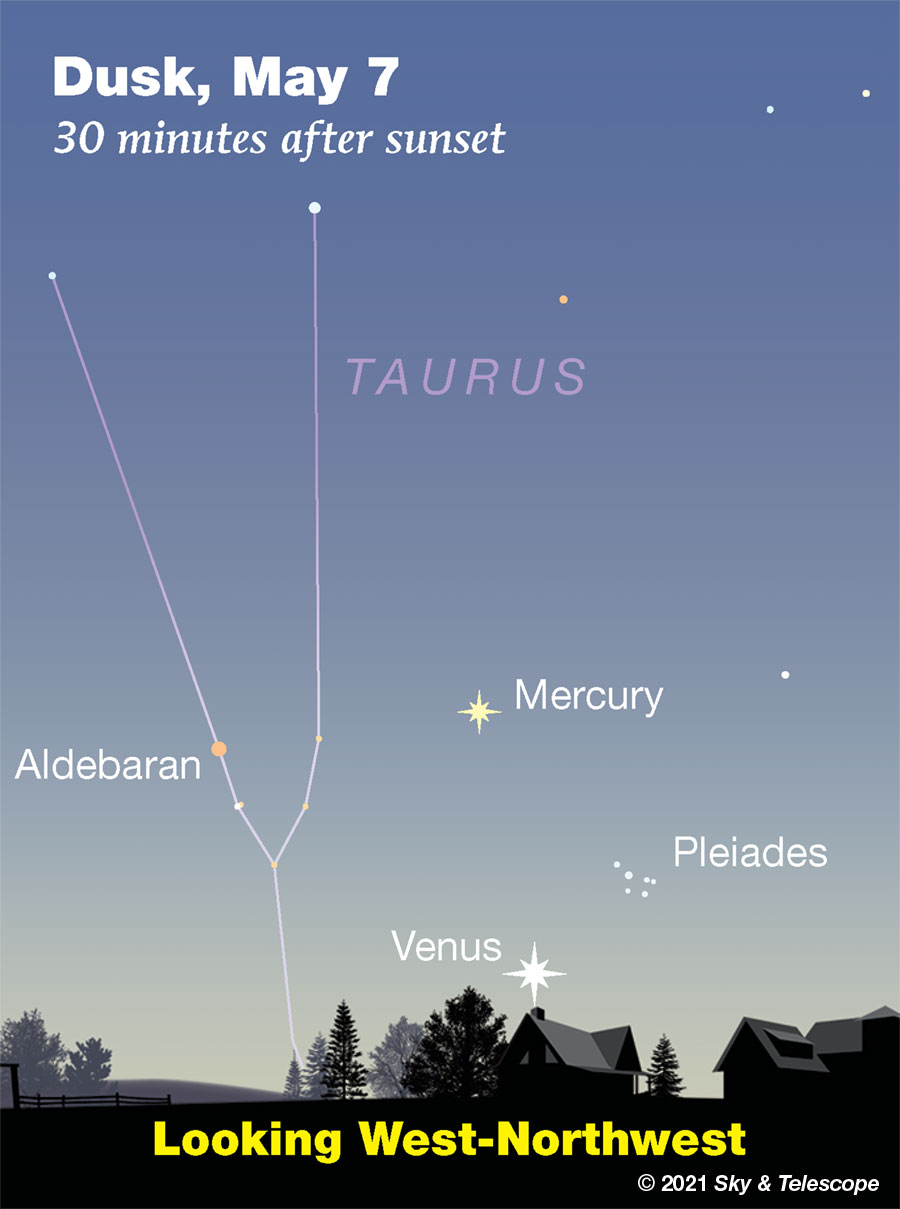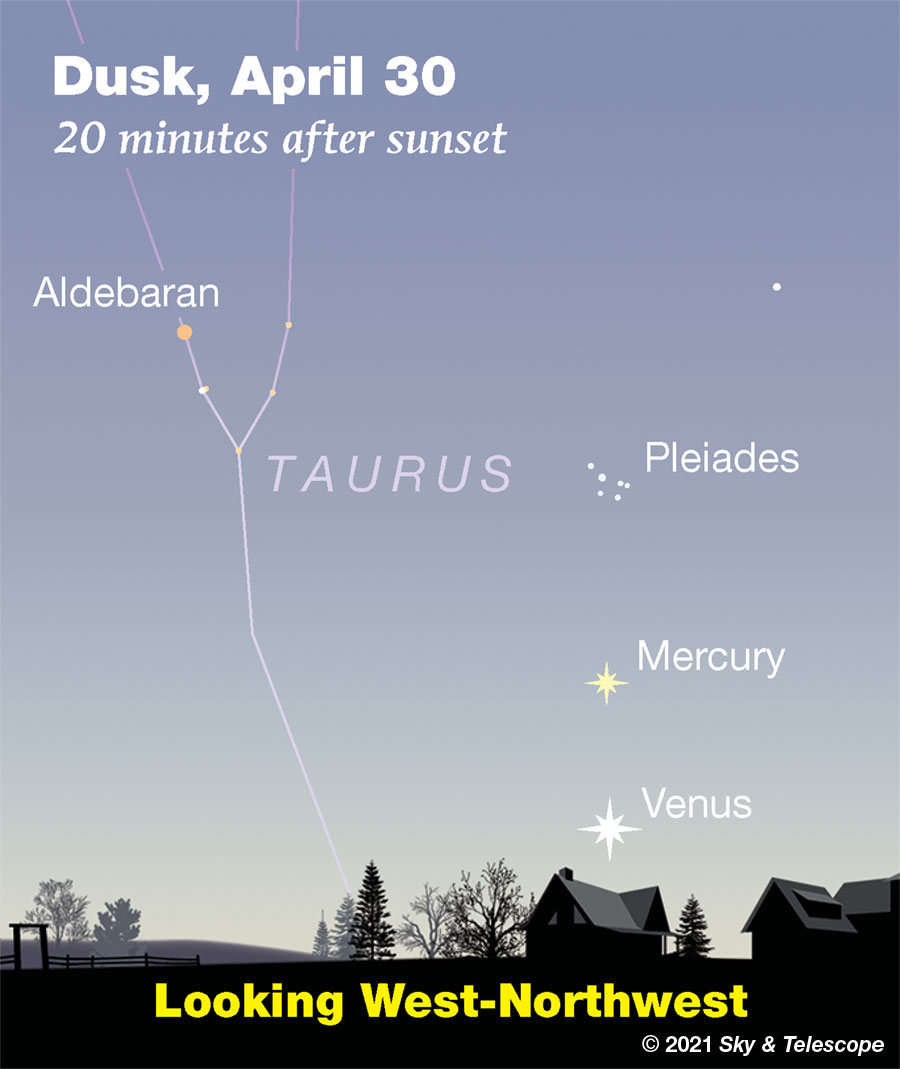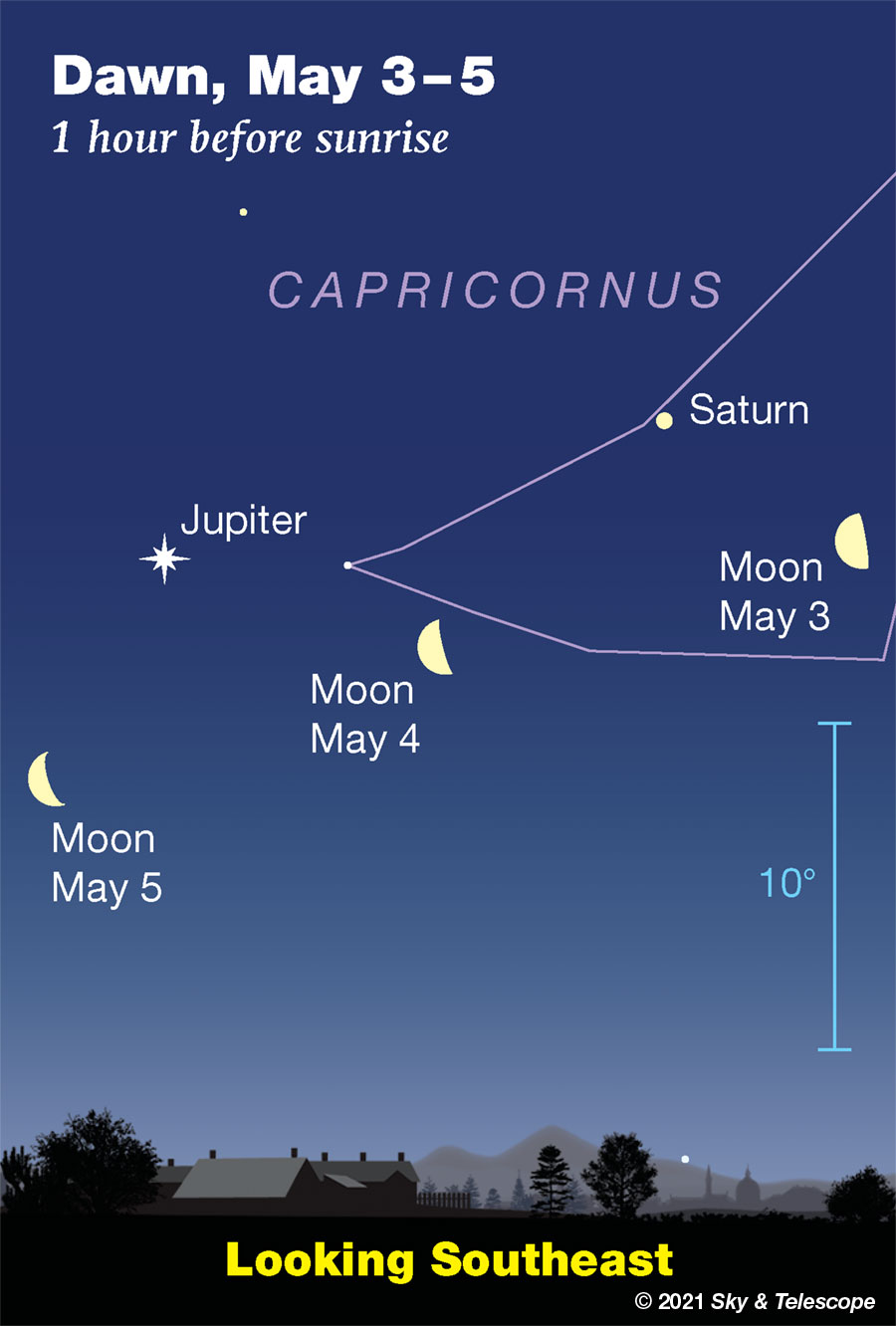THIS WEEK'S SKY AT A GLANCE, APRIL 2 – 10
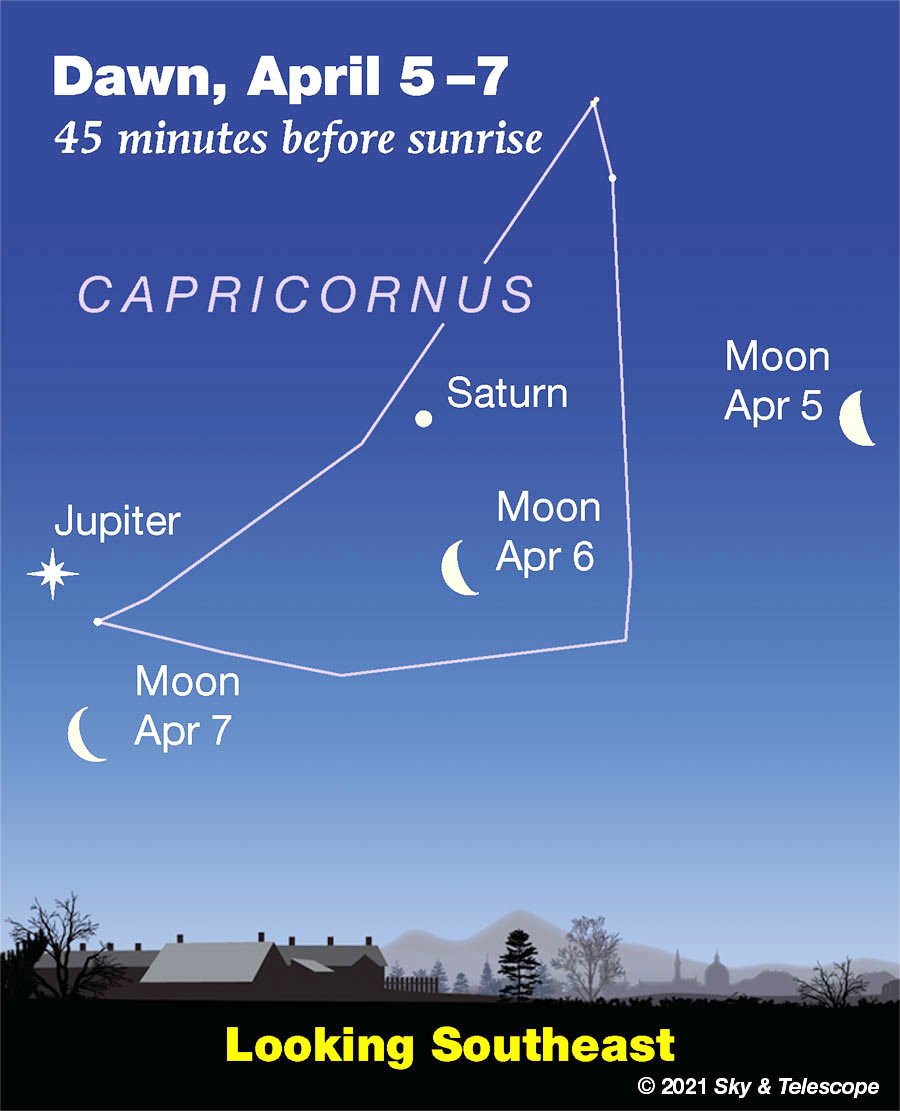 https://skyandtelescope.org/astronomy-news/this-weeks-sky-at-a-glance-april-2-10/
https://skyandtelescope.org/astronomy-news/this-weeks-sky-at-a-glance-april-2-10/also see:
https://astronomy.com/MONDAY, APRIL 5
■ Shortly after the end of twilight around this time of year, Arcturus, the bright Spring Star climbing in the east, stands just as high as Sirius, the brighter Winter Star descending in the southwest (for skywatchers at mid-northern latitudes).
■ Early in Tuesday's dawn the crescent Moon shines under Saturn, as shown below. Then in Wednesday's dawn, the Moon shines under Jupiter.
29
8th-magnitude Nova in Cassiopeia. Nova Cassiopeiae 2021, now also known as V1405 Cassiopeiae, was still at about magnitude 8.2 as of April 2nd, after it was discovered at 9.6 on March 18th and quickly peaked at 7.7. For finder charts and more info, see Bright Nova Erupts in Cassiopeia.
To get a light curve with the most up-to-date brightness measurements, go to aavso.org and in "Pick a Star", enter "V1405 Cas" and choose "Plot a light curve". There, visual observers' estimates are the open black circles, and photoelectric V magnitudes are the green squares. (You can see calendar dates instead of Julian Days using "Preferences".)
And where's Cassiopeia itself? Catch it sinking in the north-northwest right after the end of twilight. Look early before it gets too low!
FRIDAY, APRIL 2
■ Shortly after the end of twilight around this time of year, Arcturus, the bright Spring Star climbing in the east, stands just as high as Sirius, the brighter Winter Star descending in the southwest (for skywatchers at mid-northern latitudes).
These are the two brightest stars in the sky at the time. But Capella is a very close runner-up to Arcturus! Spot it high in the northwest.
Jupiter and Saturn edge ever higher in the southeast during early dawn all April. . .
SATURDAY, APRIL 3
■ The huge, bright Winter Hexagon is still in view early after dark, filling the sky to the southwest and west.
Start with brilliant Sirius in the southwest, the Hexagon's lower left corner. High above Sirius is Procyon. From there look higher upper right for Pollux and Castor (lined up nearly horizontal), lower right from Castor to Menkalinan and then bright Capella, lower left from there to Aldebaran (past Mars), lower left to Rigel at the bottom of Orion, and back to Sirius.
The Hexagon is somewhat distended. But if you draw a line through its middle from Capella to Sirius, the "Hexagon" is fairly symmetric with respect to that axis.
■ Last-quarter Moon tonight (exactly last quarter at 6:02 a.m. Sunday morning EDT). The Moon rises tonight very late, around 2 or 3 a.m. Before dawn on Sunday morning the you'll find it shining at the handle of the Sagittarius Teapot.
SUNDAY, APRIL 4
■ Right after it's fully dark, Sirius shines brilliantly in the south-southwest. Lower left of Sirius, by about one fist, is the triangle of Adhara, Wezen, and Aludra, from right to left. They form Canis Major's hind foot, rear end, and tail, respectively. Or, alternatively, the lower end and handle of the Meat Cleaver.
A little upper left of them, forming a 3rd- and 4th-magnitude arc 7° long, are the three uppermost stars of the constellation Puppis. No, that's not a puppy, despite following right behind the Big Dog. It's the Poop Deck (stern) of the giant ancient constellation Argo Navis, the ship of Jason and the Argonauts. These three are the only stars of Argo that are readily visible naked-eye from mid-northern latitudes.
Just 1.5° upper right of the middle of the three, binoculars on a dark night will show the 6th-magnitude open cluster M93. It's elongated northeast-southwest.
MONDAY, APRIL 5
■ Shortly after the end of twilight around this time of year, Arcturus, the bright Spring Star climbing in the east, stands just as high as Sirius, the brighter Winter Star descending in the southwest (for skywatchers at mid-northern latitudes).
■ Early in Tuesday's dawn the crescent Moon shines under Saturn, as shown below. Then in Wednesday's dawn, the Moon shines under Jupiter.
. . .And on April 6th and 7th, the waning Moon poses under the giant planets.
TUESDAY, APRIL 6■ The bright star high in the west-northwest during and after dusk is Capella. Its pale-yellow color matches that of the Sun, meaning they're both about the same temperature. But otherwise Capella is very different. It consists of two yellow-giant stars orbiting each other every 104 days.
Moreover, for telescope users, it's accompanied by a distant, tight pair of red dwarfs: Capella H and L, magnitudes 10 and 13. Article and finder charts.
WEDNESDAY, APRIL 7
■ Castor and Pollux shine together nearly overhead in the south after dark. Pollux is slightly the brighter of these "twins." Draw a line from Castor through Pollux, follow it farther out by a big 26° (about 2½ fists at arm's length), and you're at the dim head of Hydra, the Sea Serpent. In a moonless dark sky it's a subtle but distinctive star grouping, about the width of your thumb at arm's length. Binoculars show it easily through light pollution or moonlight.
Continue the line farther by a fist and a half and you hit 2nd-magnitude Alphard, Hydra's orange heart.
Another way to find Hydra's head: It's almost midway from Procyon to Regulus.
THURSDAY, APRIL 8
■ At this time of year, the two Dog Stars stand vertically aligned around the end of twilight. Look southwest. Brilliant Sirius in Canis Major is below, and Procyon in Canis Minor is high above.
FRIDAY, APRIL 9
■ Vega, the bright "Summer Star," rises in the northeast late these evenings. Exactly where should you watch for it to come up? Spot the Big Dipper almost overhead in the northeast. Look at Mizar at the bend of its handle. If you can see Mizar's tiny, close companion Alcor (binoculars show it easily), follow a line from Mizar through Alcor all the way down to the horizon. That's where Vega will make its appearance.
SATURDAY, APRIL 10
■ By late evening the Sickle of Leo stands nearly vertical high in the south. Its bottom star is Regulus, the brightest of Leo. Leo himself is walking westward. The Sickle forms his front leg, chest, mane, and part of his head. Off to the left, a long right triangle forms his hind end and long tail.
THIS WEEK'S PLANET ROUNDUPMercury, Venus, and Neptune are out of sight in the glare of the Sun.
Mars (magnitude +1.3, in Taurus) shines high in the west after dark. It's visibly fainter now than than orange Aldebaran below it, not to mention brighter orange Betelgeuse farther to Mars's left. In a telescope Mars is a mere 5 arcseconds wide: a tiny, shimmering bright blob too small for any surface detail.
Jupiter and Saturn have been emerging into dawn view for the last month. Look for them low in the southeast about 60 to 40 minutes before your local sunrise time. Saturn is the higher of the two, but it's much dimmer at magnitude +0.8. Jupiter shines at magnitude –2.1 (those values don't count the atmospheric extinction for objects at low altitudes). Find Jupiter some 12° to Saturn's lower left: roughly a fist at arm's length.
